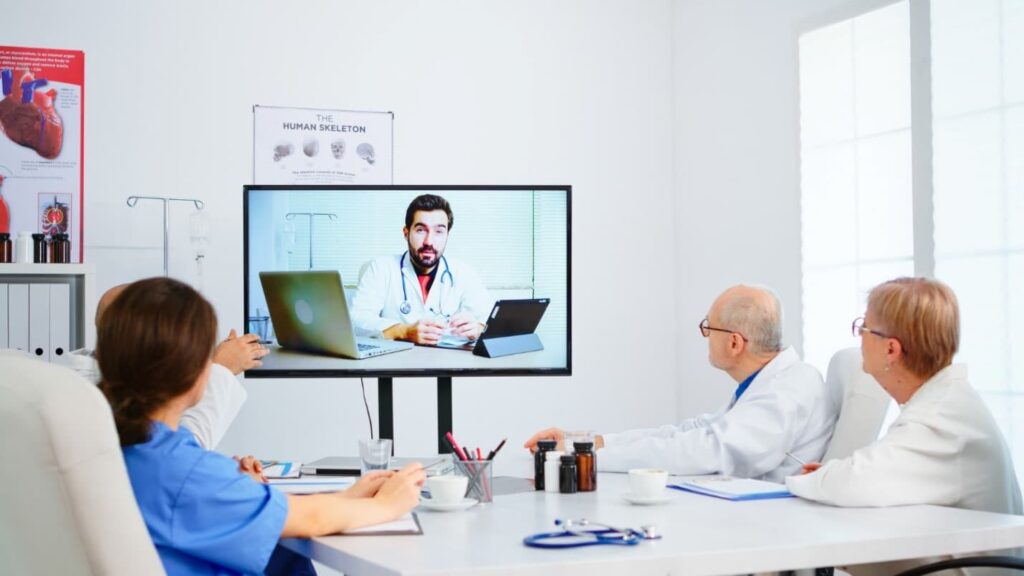In the wake of the COVID-19 pandemic, the landscape of medical conferences has dramatically transformed. Traditional in-person gatherings have been replaced, at least in part, by virtual medical conferences. This shift has had far-reaching consequences for healthcare professionals, researchers, and the medical industry. In this article, we will explore the impact of virtual medical conferences from various perspectives, shedding light on the benefits and challenges that have emerged in this new era of medical knowledge exchange.
The Rise of Virtual Medical Conferences
Virtual medical conferences emerged as a response to the pandemic’s restrictions on travel and large gatherings. Healthcare professionals and researchers quickly adapted to this new format, leveraging technology to continue their education and collaboration efforts. Virtual conferences enabled participants from across the globe to attend without the logistical challenges of travel, making it easier for a wider audience to engage with cutting-edge research and medical advancements.
One of the most significant advantages of virtual conferences is the increased accessibility of medical knowledge. In the past, attending a medical conference often required significant financial resources and time away from clinical practice. Virtual conferences have democratized access, allowing healthcare professionals from diverse backgrounds and locations to participate. This expansion of access has the potential to foster greater diversity in medical research and practice.
Benefits of Virtual Medical Conferences
Virtual conferences have proven to be cost-effective for both organizers and attendees. Participants save on travel expenses, accommodation, and registration fees, while organizers reduce overhead costs associated with venue rental and event logistics. This cost-efficiency has allowed medical associations to allocate more resources to research and education initiatives.
Virtual conferences offer unparalleled flexibility and convenience. Attendees can access sessions and presentations at their own pace, often with on-demand content for extended periods after the event. This flexibility accommodates busy schedules and allows healthcare professionals to engage with conference material on their own terms, ultimately enhancing the learning experience.
The reduction in travel associated with virtual conferences has a positive environmental impact. Fewer flights and accommodations lead to lower carbon emissions, contributing to sustainability goals. Many healthcare professionals and organizations appreciate the opportunity to reduce their carbon footprint while continuing to engage in meaningful professional development.

Challenges and Limitations
While virtual conferences excel in delivering content, they often fall short in providing opportunities for spontaneous networking and serendipitous encounters that occur at in-person events. Building professional relationships and collaborations can be more challenging in a virtual setting, as the structured nature of virtual conferences may not facilitate organic interactions.
Technical difficulties, such as poor internet connections, audio problems, and platform glitches, can disrupt the virtual conference experience. These issues can be frustrating for both presenters and attendees, potentially affecting the quality of knowledge transfer.
Virtual conferences may face challenges in maintaining attendee engagement throughout the event. Attendees may multitask or become distracted when attending sessions from the comfort of their homes or offices. This reduced engagement can impact the effectiveness of educational sessions and discussions.
The Future of Medical Conferences
The concept of hybrid conferences has gained traction as the world gradually returns to a semblance of normalcy post-pandemic. These events combine elements of both in-person and virtual conferences, offering attendees the option to choose how they participate. Hybrid conferences aim to address the limitations of virtual conferences while still reaping the benefits of increased accessibility.
The challenges faced by virtual conferences have spurred innovation in virtual event platforms. Improved user interfaces, networking tools, and interactive features are being developed to enhance the virtual conference experience. As technology evolves, virtual conferences will likely become more engaging and user-friendly.
The increased accessibility afforded by virtual conferences is a trend that is here to stay. Medical associations and organizers recognize the importance of ensuring that medical knowledge remains accessible globally. Efforts to reduce registration fees, offer scholarships, and provide translated content are becoming more common to promote inclusivity.
Conclusion
The impact of virtual medical conferences in a post-pandemic world is undeniable. These events have revolutionized how healthcare professionals access and share medical knowledge, offering advantages and challenges. As we move forward, the hybrid conference model and ongoing technological advancements will likely shape the future of medical conferences, ensuring that the medical community continues to thrive in an increasingly interconnected world.
In conclusion, virtual medical conferences have opened new doors to learning and collaboration, making medical knowledge more accessible and cost-effective. However, they also pose challenges related to networking and technical issues. As we navigate this evolving landscape, the medical community must adapt and innovate to make the most of these virtual platforms while preserving the essence of in-person gatherings.
